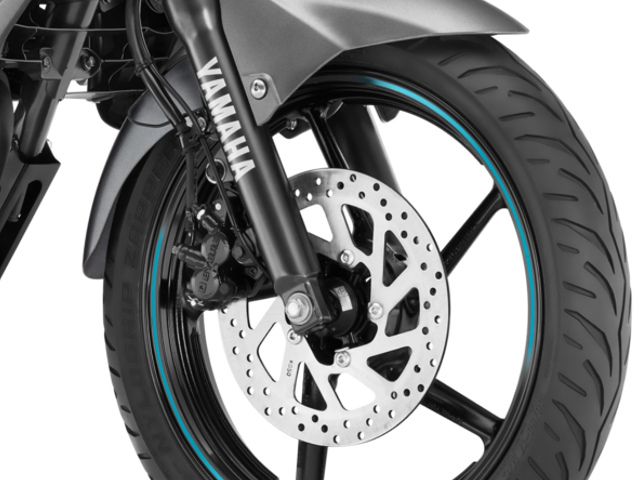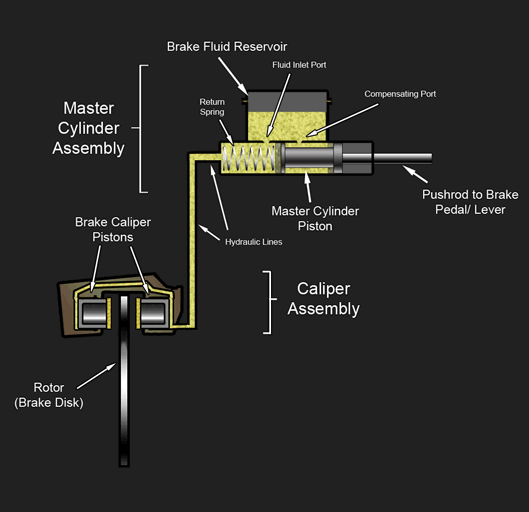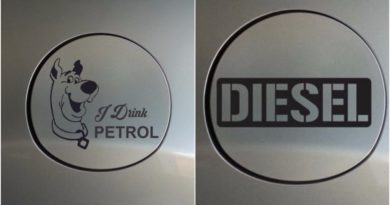Over the last 5 years, Indian two wheeler market has drastically changed as buyers interest shifted towards the sports bike offered at an affordable price range. Manufacturers are offering wide range of sports bike at various price points. Talk of sports bike and immediate thought in your mind would be power packed engine with superb top speed – of course that is true but with increasing engine power you need better stopping power as well and that comes from a better braking system – Disc Brakes. Every other bike are now equipped with at least front disc brake which are considered far better at its job over drum brake. But did you ever thought why those shining disc have holes on it? why not just a solid disc instead?
 |
| Disc Brake at front wheel |
To understand the logic behind this design, we need to know exactly how disc brake perform its job.
What is disc brake
Disc brake on bike is mostly a hydraulic system that utilize a caliper to squeeze pair of pads via. hydraulic force against a disc or rotor attached to the wheel. Friction generated between pads and disc eventually slows down the disc rotation.
Components of bike’s disc brake
Below are the major components used in hydraulic disc brake system –
- The caliper – houses brake pads & piston.
- The disc or rotor – attached to wheel via. hub.
- The brake fluid reservoir – mostly placed next to brake actuation lever.
 |
| Disc brake on yamaha fz-s |
How disc brake work
The moment brake lever is actuated, a force is exerted on the piston of master cylinder causing brake fluid from reservoir to flow towards the hydraulic line. This results in an increase of fluid pressure in the complete hydraulic system, forcing the fluid to flow towards the brake caliper. Piston housed in the brake caliper is forced by the fluid pressure to apply force on to the brake pads to press them against the spinning disc/rotor. Friction between brake pads and spinning disc generates a braking torque which helps in slowing down the vehicle. Due to this friction, heat is generated which has to be properly dissipated in order to have good braking efficiency and longer life of brake pads. This is the main reason why we have drilled holes on disc to help in dissipating the generated heat due to braking. Along with this, drilled holes help in removal of water from the rotor/disc surface to ensure constant and good contact between brake pads and disc.
 |
| Working of hydraulic disc brake (Image Source: Wikipedia) |







